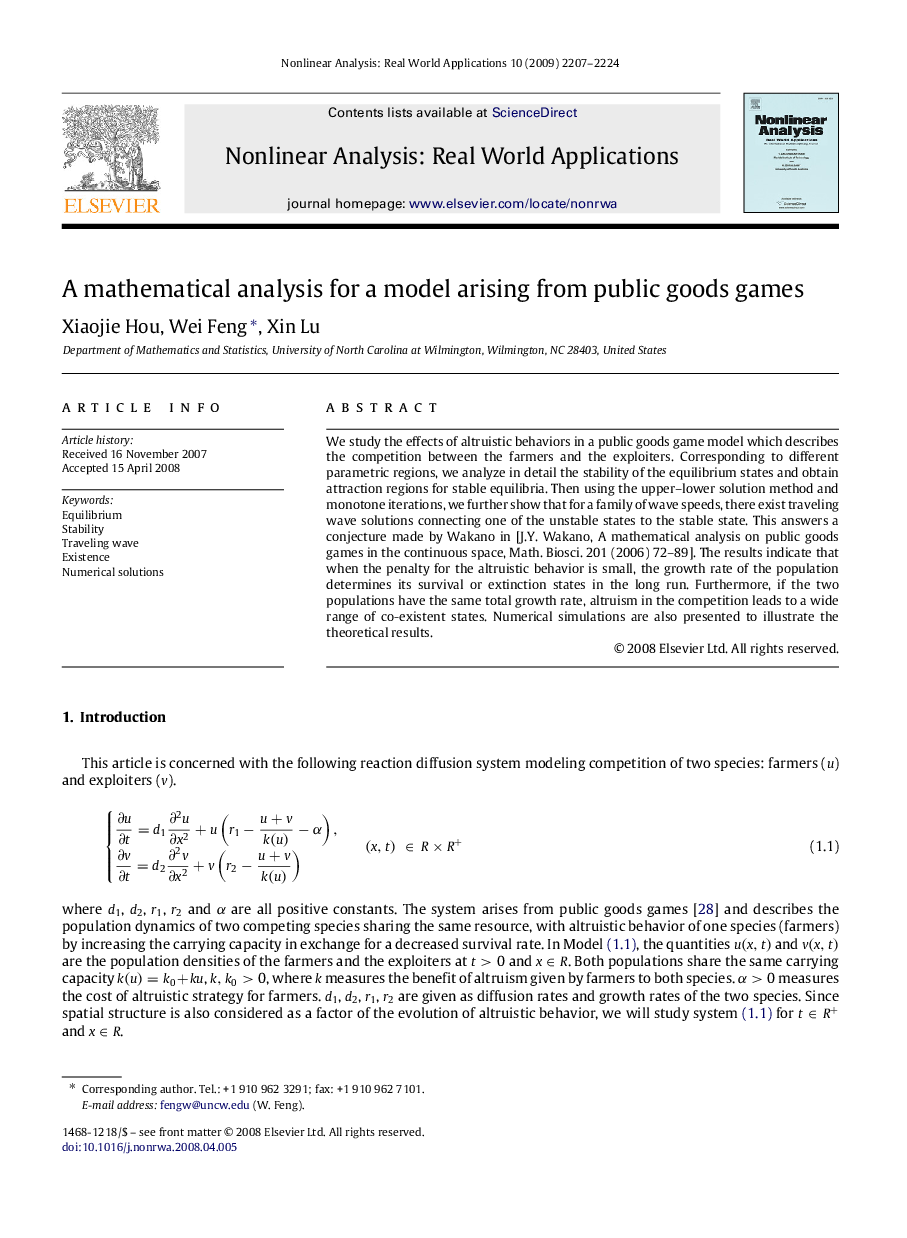| Article ID | Journal | Published Year | Pages | File Type |
|---|---|---|---|---|
| 838419 | Nonlinear Analysis: Real World Applications | 2009 | 18 Pages |
We study the effects of altruistic behaviors in a public goods game model which describes the competition between the farmers and the exploiters. Corresponding to different parametric regions, we analyze in detail the stability of the equilibrium states and obtain attraction regions for stable equilibria. Then using the upper–lower solution method and monotone iterations, we further show that for a family of wave speeds, there exist traveling wave solutions connecting one of the unstable states to the stable state. This answers a conjecture made by Wakano in [J.Y. Wakano, A mathematical analysis on public goods games in the continuous space, Math. Biosci. 201 (2006) 72–89]. The results indicate that when the penalty for the altruistic behavior is small, the growth rate of the population determines its survival or extinction states in the long run. Furthermore, if the two populations have the same total growth rate, altruism in the competition leads to a wide range of co-existent states. Numerical simulations are also presented to illustrate the theoretical results.
